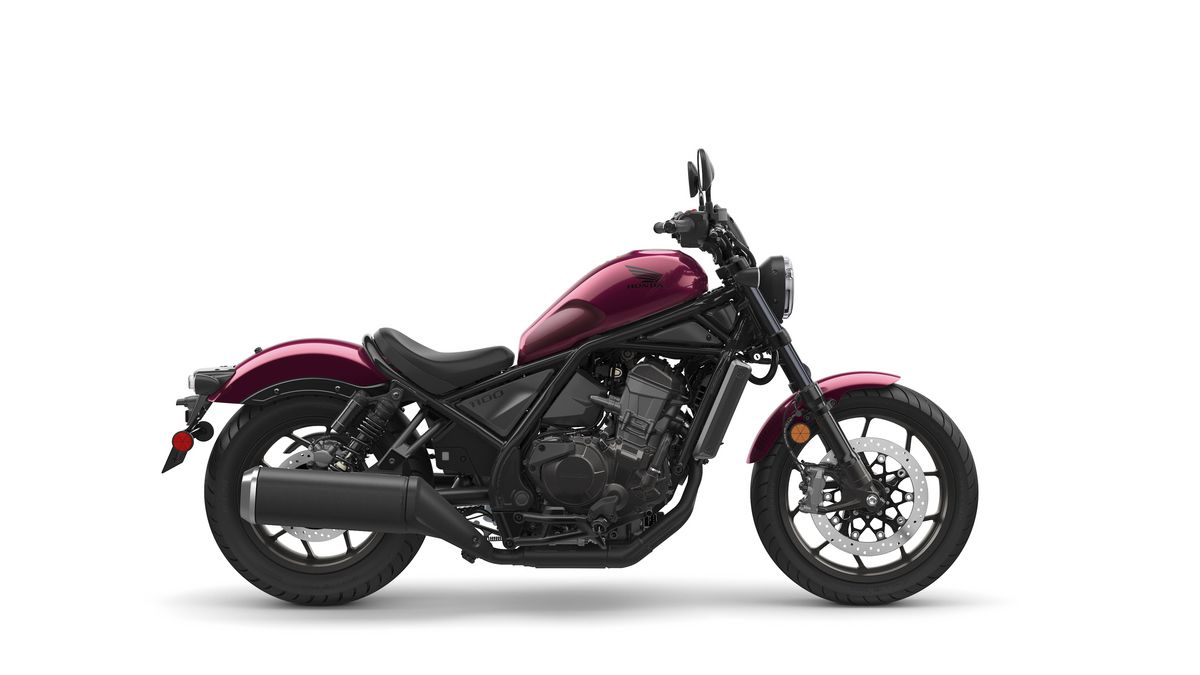
Ups
- Adjustable power delivery tailors the 1,087cc parallel-twin performance to preference or skill level
- Approachable measured 27.6-inch seat height
- Honda’s automatic Dual Clutch Transmission (DCT) available
- Built-in storage
Downs
- Approachable ergonomics for short-statured riders, but cramped for the taller pilots
- Visible wires and coolant plumbing need a tuck
Verdict
The Rebel 1100′s adjustability makes the big Rebel approachable for beginner riders, but the engine’s potential and solid chassis make it an adequate platform for intermediate riders and beyond.
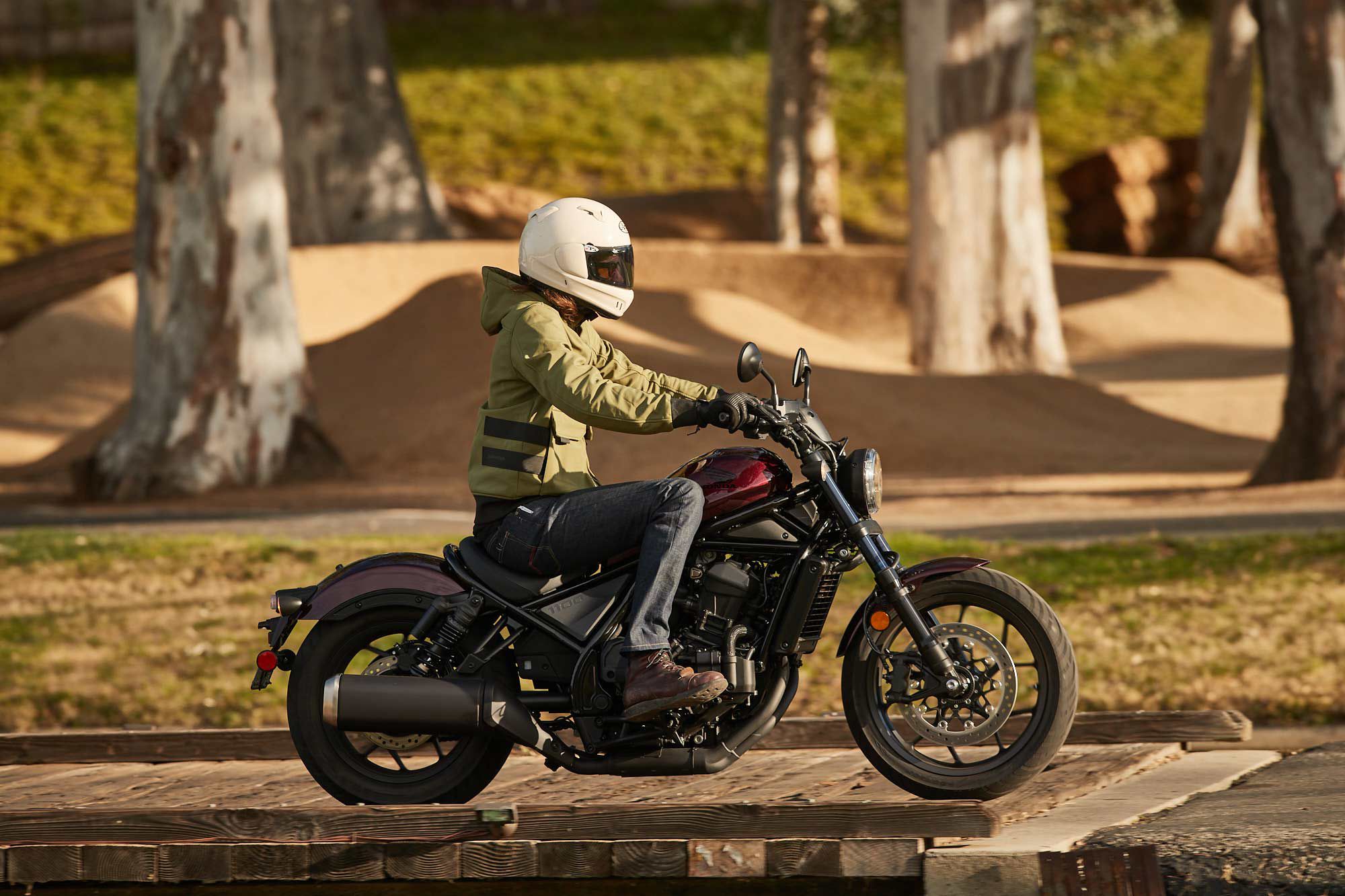
Overview
With the all-new 2021 Rebel 1100, Honda expands its beginner-friendly cruiser lineup to the next level. Utilizing a proven liquid-cooled 1,084cc parallel-twin engine seen in the Africa Twin, tight ergonomics, and creature comforts, the 1100 blends the long-standing Rebel approachability with a new sense of flexibility and performance. It’s a motorcycle that riders of all skill levels can enjoy.
Updates for 2021
The Honda Rebel 1100 is an all-new model for 2021.
Pricing and Variants
The 2021 Honda Rebel 1100 is available for $9,299 in a standard six-speed manual transmission form. Honda’s automatic Dual Clutch Transmission (DCT) is also available on the Rebel 1100 as a $700 upgrade, bringing the MSRP to $9,999.
Both models are offered in Bordeaux Red Metallic or Metallic Black.
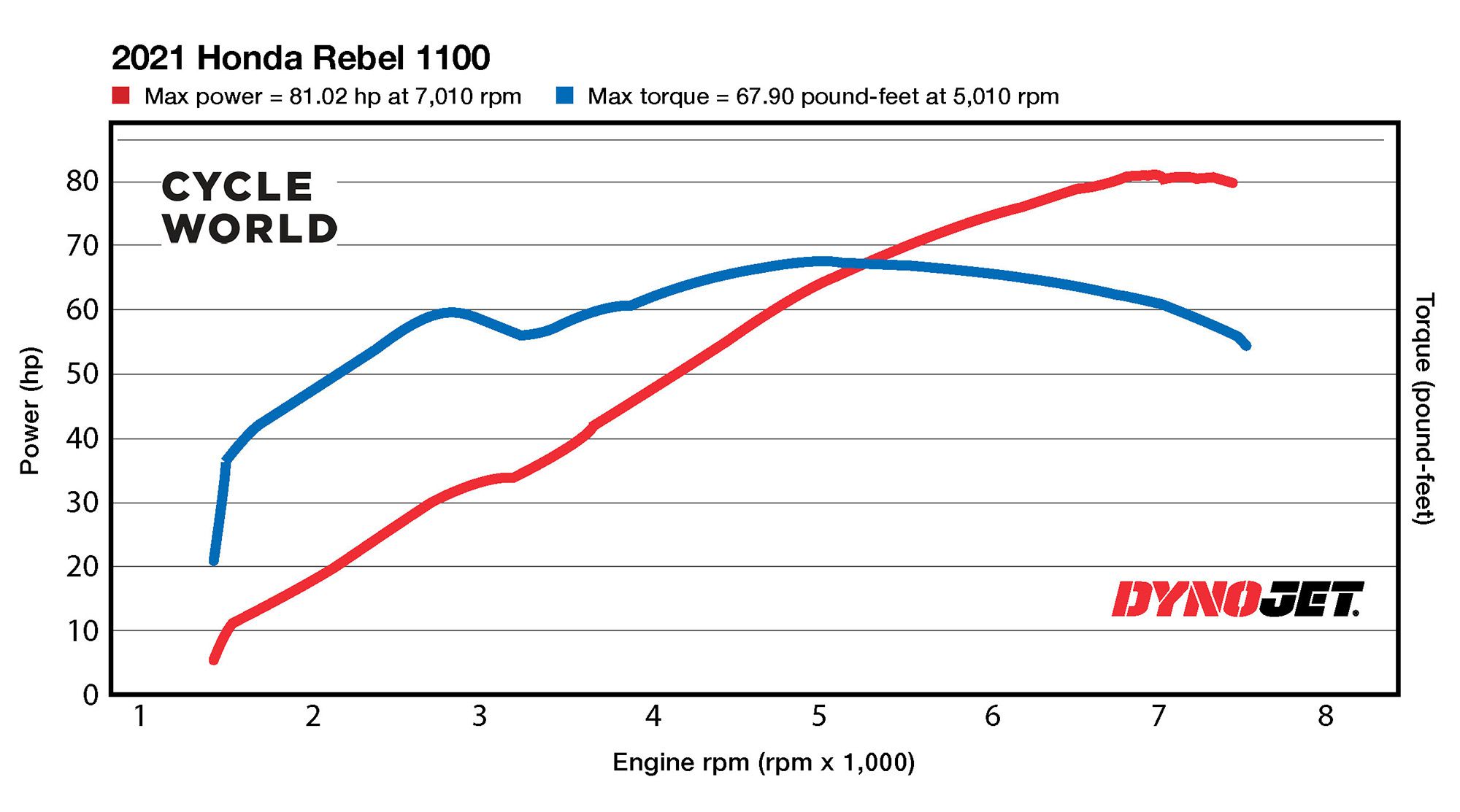
Powertrain: Engine, Transmission, And Performance
The Rebel 1100 is powered by a liquid-cooled 1,084cc Unicam parallel twin, similar to that previously seen in the Africa Twin. Tweaked and modified to suit the cruiser vibe, the Rebel’s engine sees unique engine mapping, a 20 percent larger flywheel for increased inertia, and revised camshaft profiles for a “power pulse,” as Honda says.
As mentioned above, the Rebel 1100 is offered with Honda’s automatic Dual Clutch Transmission (DCT), which eliminates the clutch levers, the need to shift, or worry of stalling at a stop. A manual setting and paddle shifters allows you to override the sytsem and make the shifts, if you desire. It’s a nice touch on the Rebel, especially for less experienced riders. And considering it only adds $700 to the price tag, it is an affordable option. The DCT adds a measured 23 pounds to the Rebel, bringing it to 512 pounds with a full tank of fuel.
Standard to the regimented Cycle World testing protocol, we ran the non-DCT Rebel 1100 on our in-house Dynojet 250i, recording power figures. The 1100 produced a peak 81.02 hp at 7,010 rpm and 67.90 pound-feet of torque at 5,010 rpm.
During Adam Waheed’s real-world MC Commute testing, he noted the friendly, yet engaging delivery and adjustability of the Rebel 1100. “It’s rambunctious enough to put a smile on your face, and we appreciate its calculated level of engine vibration that doesn’t become annoying after a couple of hours in the saddle,” Waheed wrote. “Adjustable engine power, traction, and engine-brake control make for a tailored riding experience.”
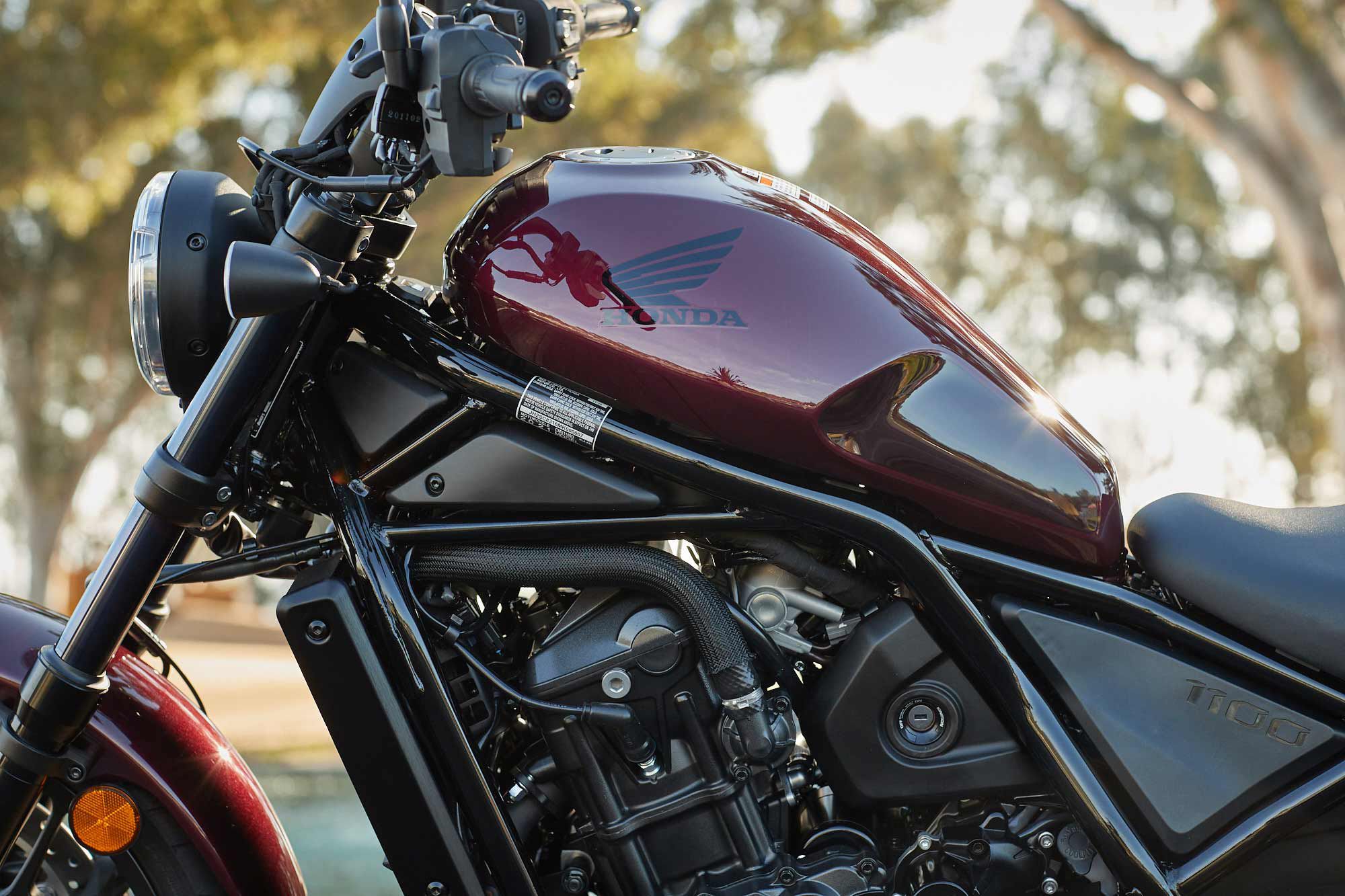
Handling
Handling, as we’ve come to expect from Honda, is delightfully neutral and inspires particular confidence at low speeds. Thanks largely to the engine placement’s effect on weight distribution, the already lightweight 489-pound (non-DCT) or 512-pound (DCT) Rebel feels incredibly well balanced and nimble.
The calibration of the Rebel’s suspension adds to its pleasing ride character too. The nonadjustable fork and preload-adjustable dual Showa shocks find sweet balance in small-bump compliance and support, though heavier riders may struggle to cope with the light spring rate.
Brakes
The 1100 stops with a Nissin dual-piston caliper on a 256mm disc in the rear and a single radially mounted Tokico four-piston caliper on a 330mm rotor in front. Brakes are responsive with good feel through the adjustable lever, allowing for precise application to help you explore the limits of the front suspension and OE-fitted Dunlop D428 tire.
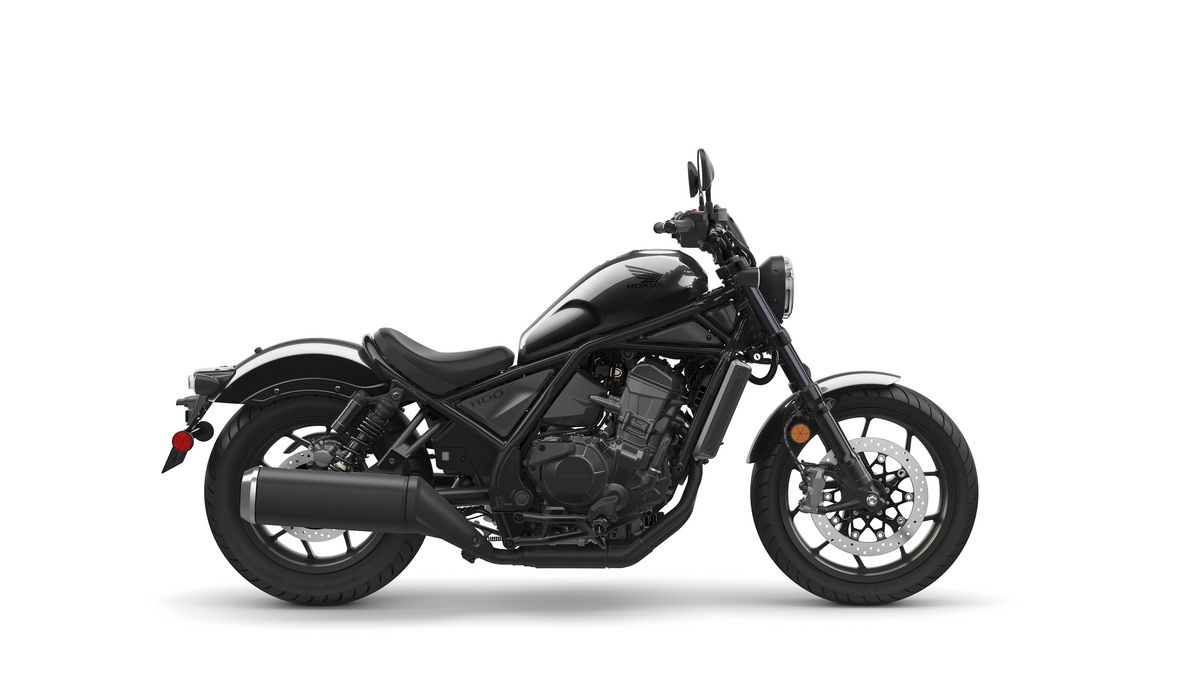
Fuel Economy and Real-World MPG
Cycle World-measured fuel economy is 37.6 mpg.
Ergonomics: Comfort and Utility
The Rebel 1100 shares a similar ergonomic configuration to its smaller-displacement kin, which is mostly good news for riders of shorter stature. A comfortable reach to the one-piece handlebar gives an in-command feel, but tight footpeg spacing can grow tiresome for riders of all sizes—especially the lankier ones, as noted in the Cycle World first ride review. Likewise, the CW-measured 27.6-inch seat height allows for an easy flat-foot stance for most riders.
A nice perk to the Rebel 1100 is 3 liters of storage located under its seat, plus a USB-C charging port.
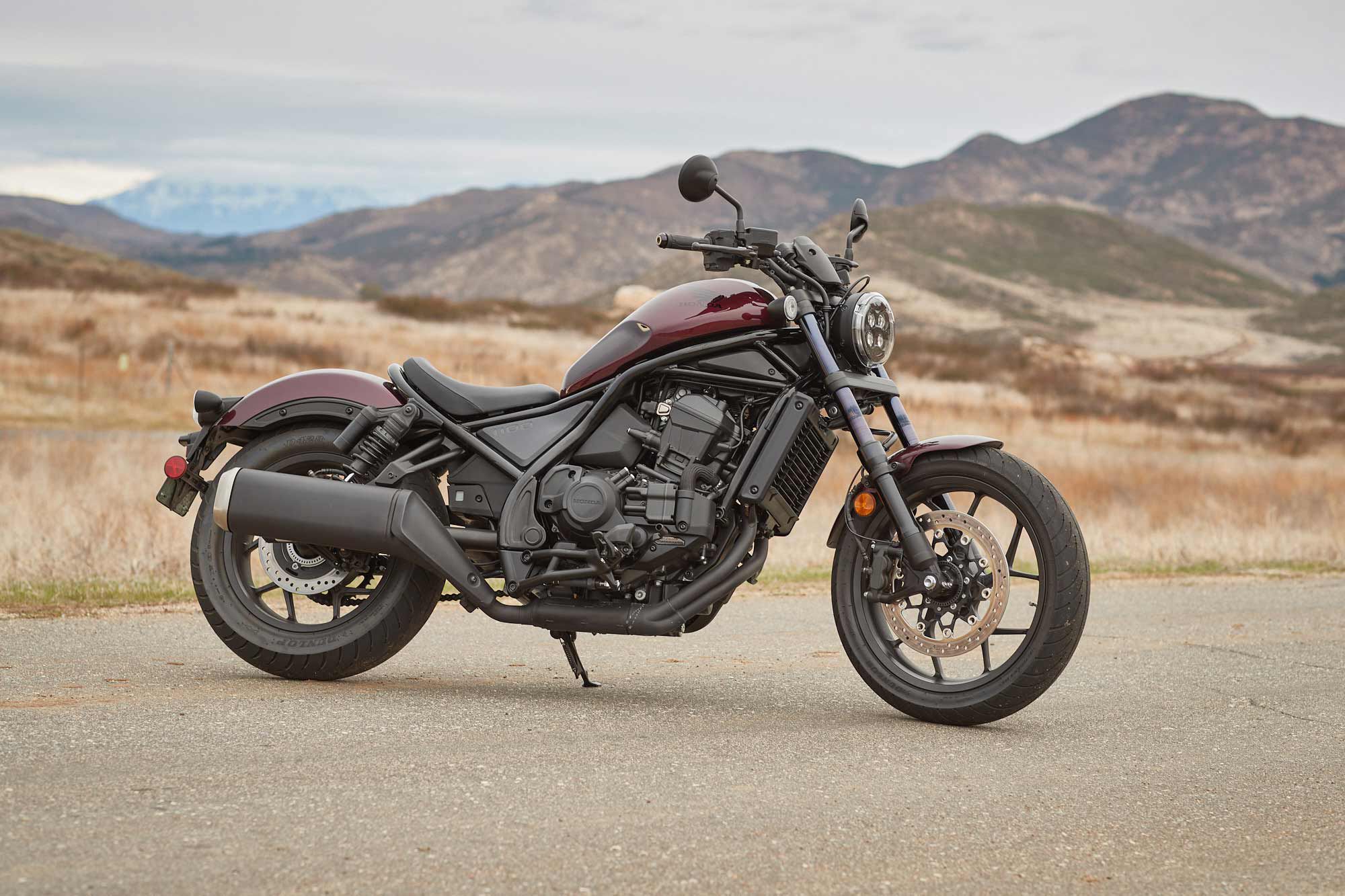
Electronics
As we’d hoped, much of the technology seen in the Africa Twin has been carried over to the Rebel 1100. That means power delivery is adjustable via three selectable power modes and then managed by a multi-level (plus off) Honda Selectable Torque Control (HSTC), or the manufacturer’s terminology for traction control. Off-throttle deceleration is also adjustable in three settings.
Three riding modes (Rain, Sport, Tour) make for preset combinations of these settings, while a fourth User mode allows for personal preference. That adjustability creates flexibility in the Rebel 1100′s character, meaning it can be tailored for all types of riders and expands the customer base of the model.
The Rebel 1100 also gets full-LED lighting and a basic LCD display to relay all pertinent riding information.
Warranty and Maintenance Coverage
The Rebel 1100 has a one-year, transferable, unlimited-mileage limited warranty.
Quality
The Rebel 1100 feels well engineered and packs high performance for an otherwise friendly cruiser, but plastic paneling and an excess of wires and exposed plumbing rob it of top-notch aesthetics. Still, black-out finishes, full-LED lighting, and other touches remind of Honda’s quality.
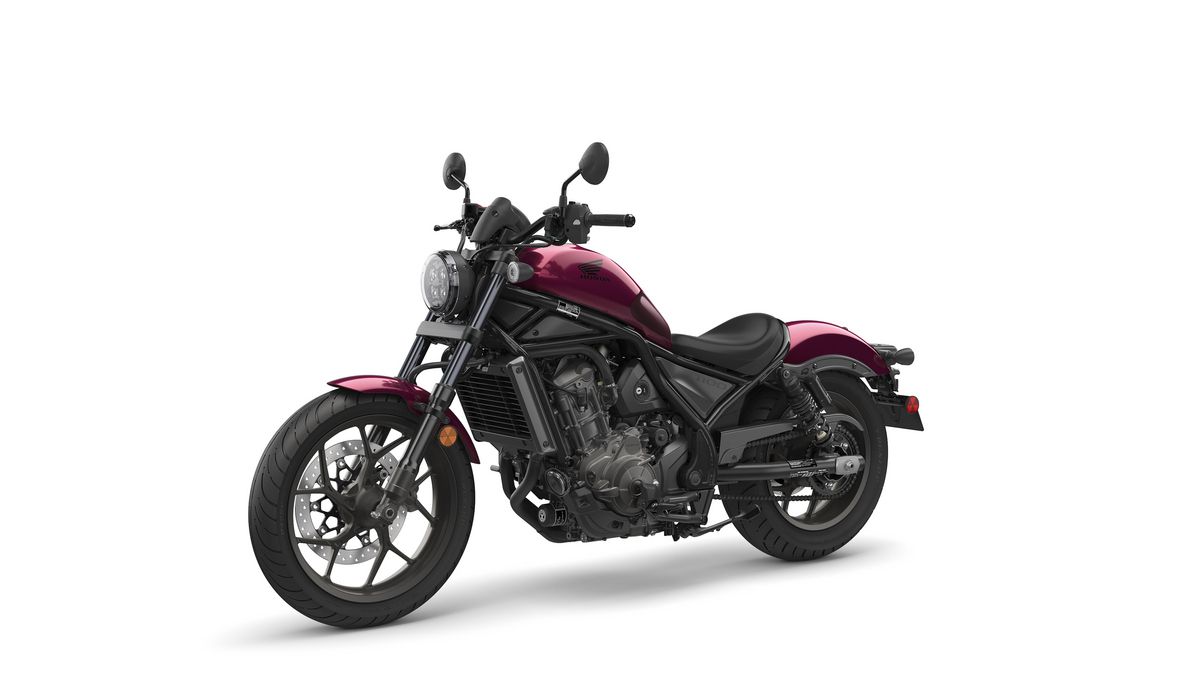
2021 Honda Rebel 1100 Claimed Specifications
| MSRP: | $9,299 (base)/$9,999 (DCT) |
| Engine: | 1,084cc, SOHC, liquid-cooled Unicam parallel twin; 4-valve/cyl. |
| Bore x Stroke: | 92.0 x 81.5mm |
| Transmission/Final Drive: | 6-speed/chain |
| Fuel Delivery: | PGM-FI electronic fuel injection w/ 46mm throttle bodies |
| Clutch: | Wet, multiplate |
| Engine Management/Ignition: | Ride-by-wire/full transistorized ignition |
| Frame: | Steel-tube trellis construction |
| Front Suspension: | 43mm conventional telescopic fork w/ dark titanium oxide coating, spring preload adjustable; 4.8 in. travel |
| Rear Suspension: | Dual Showa shocks w/ 12.5mm shafts, piggyback pressurized reservoirs, spring preload adjustable; 3.7 in. travel |
| Front Brake: | 4-piston monoblock, radial-mount hydraulic caliper, floating 330mm disc w/ ABS |
| Rear Brake: | 1-piston hydraulic caliper, 256mm disc w/ ABS |
| Wheels, Front/Rear: | Cast; 18 in. / 16 in. |
| Tires, Front/Rear: | Dunlop D428; 130/70-18 / 180/65-16 |
| Rake/Trail: | 28.0°/4.3 in. |
| Wheelbase: | 59.8 in. |
| Ground Clearance: | 4.7 in. |
| Seat Height: | 27.5 in. |
| Fuel Capacity: | 3.6 gal. |
| Wet Weight: | 487 lb. (base)/509 lb. (DCT) |
| Contact: | powersports.honda.com |
Cycle World Tested Specifications
| Seat Height: | 27.64 in. |
| Wet Weight: | 489 lb. (base)/512 lb.(DCT) |
| Rear-Wheel Horsepower: | 81.02 hp @ 7,010 rpm |
| Rear-Wheel Torque: | 67.90 lb.-ft. @ 5,010 rpm |
Source: MotorCyclistOnline.com
